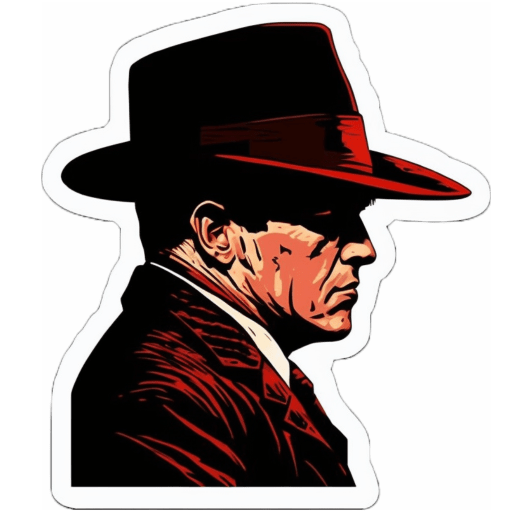Death of Pasquale Ferrara, 1917
Hasso R. Pestalazzi, 46, chief truancy officer for the Milwaukee school board, said in 1912 that “if the decent element in the Third Ward would clean out a small gang of cowards who are causing all this trouble, Milwaukee wouldn’t have any more of these outrages. There are a whole lot of cowards in there, jealous and suspicious of each other, and fighting all the time; and if the police or the decent men in the ward would go in and clean out about fifteen leaders, such outrages would stop immediately.” Pestalazzi declined to name names, but those who knew heard him loud and clear.
Railroad laborer Pasquale Ferrara, 31, was found dead on Tuesday, July 24, 1917 at his home, 316 Van Buren Street, with his throat slashed in four places and once on his left arm. One wound on his neck was fourteen centimeters long. A razor was found still grasped in his right hand and a “considerable quantity” of blood was in his bed. More blood was puddled up on the kitchen floor, and the whole house was disastrously disordered. Police questioned his daughter Louise, 11, who told them, “Papa and Mama had some trouble last night, and he has not had supper at home for the last two nights.”
The doctors who performed the autopsy, Harry E. Bradley and Wilhelm Becker, said the wound was such that the cuts could not have been self-inflicted. Captain John Sullivan, on the contrary, believed it was suicide. “We could come to no other conclusion than that Ferrara committed suicide,” Sullivan said. “We questioned all witnesses, and Joseph Bedami insisted that he saw Ferrara draw the razor across his throat. There is no flaw in the stories of any of the five we examined. They were questioned separately, and Bedami’s story is entirely corroborated by that of the other witnesses. Ferrara had an excitable temper and had quarreled with his wife over money matters. He accused his wife of spending the family funds too freely. He was in debt in Sicily and was striving to make enough money to cancel the obligation. Both his wife and Bedami say that Ferrara attempted to kill himself once before.”
Following Ferrara’s death, Hasso Pestalazzi again spoke to the media, saying, “Only the breaking up of the congested conditions in the Third Ward will prevent violence there. One who is familiar with conditions there knows that it is not uncommon to find members of a family living in two rooms, or even one. Authorities should step in and condemn the shanties, forcing the inhabitants to move elsewhere.” He attributed Ferrara’s death to petty quarrels amongst the leaders in the Italian community, again unnamed, and said the underlying problem was immigration.
“I have never known a case where a lad born and brought up in America was found to be the immediate cause of an intrigue. It is always those who have come over, bringing with them an inherited fear of the police. Many times the ‘go-between’ does not play fair and receives a stab in the back as consequence. In Milwaukee there is a large criminal class due to the fact that the Italian government, before the United States laid down its stringent immigration laws, sent to America only the lowest of its people —- undesirable citizens. Some went to South America, but the majority went to North America. They are still carrying out the principles of their forefathers in doing their own punishing and they mistrust the police as much as they did in Italy. Although in America, the majority are still in their own colonies, and retain the customs of their native land. By segregating them, there will be a better chance of compelling them to imbibe American ways and modes of living.” (Pestalazzi himself was born in Italy in 1867 —- he immigrated in 1888, married an American-born woman, Minnie, and they had two children in Milwaukee just before 1900. Apparently he was an exception to his own rule.)
Check out the Milwaukee Mafia Podcast episode covering this:
Coroner’s Inquest
A coroner’s inquest was scheduled for Friday, July 27. Prior to the inquest, District Attorney Zabel declined to have an opinion on the cause of death, stating, “I will wait until the coroner’s jury give their verdict and until the police send me the report of their investigation.”
At the inquest, the doctors testified, as well as the detectives and three boarders: Joseph Bedami, Salvatore Orlando and Thomas Mancuso. Bedami testified that the blood on the kitchen floor was his – received when his hand was cut while trying to wrest the razor from Ferrara, who was naked and in a daze. He had known Ferrara three years and they bonded over their hometown of Prizzi. But Ferrara was unstable, and had previously stabbed himself in the chest and would occasionally bite himself. Ferrara and his wife would fight over her cooking, and he beat her. When Bedami heard Ferrara “groaning like a bulldog” the night of his death, he had no idea what he might see when he turned on the lamp. While the doctors testified that suicide was very unlikely due to the nature of the wounds, they admitted such an act was possible if done in a frenzy. Deputy Coroner Henry John Grundman ruled the death a suicide, and then Dr. Becker publicly changed his position, saying, “From the position of the wounds on the man’s throat, it seemed to Dr. Bradley and myself almost impossible for them to have been self-inflicted. However, after hearing the testimony of the three boarders and Detective (Albert H.) Templin, I am inclined to believe that it is probably a case of suicide.”
